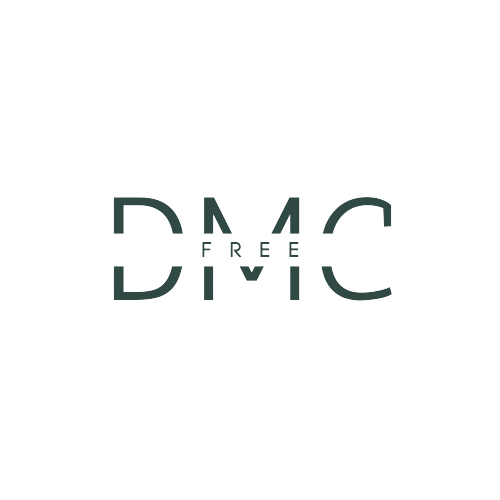
In the contemporary job market, merely having a degree or a few certifications isn’t enough to stand out. For professions such as data analysis, showing tangible proof of your skills can make all the difference. A portfolio acts as this evidence, providing a visual representation of your abilities and achievements. Here’s a comprehensive guide on building a data analyst portfolio to enhance your hiring chances.
Table of Contents
Why a Portfolio Matters for Data Analysts
Before diving into creating a portfolio, it’s crucial to understand its significance. A portfolio:
- Demonstrates Practical Experience: It showcases your hands-on experience with data, tools, and techniques.
- Highlights Soft Skills: Beyond technical prowess, data analysts need to communicate their findings effectively. A portfolio can reflect this ability.
- Offers a Competitive Edge: When multiple candidates possess similar qualifications, a well-crafted portfolio can tip the scales in your favor.
While the article provides an excellent overview of building a data analyst portfolio, some additional elements can further enhance its comprehensiveness. Let’s identify these potential gaps:
| Missing Element | Description |
|---|---|
| Detailed Project Descriptions | Encourage recruiters or viewers to take action, whether it’s reaching out, downloading your CV, or viewing a particular project in depth. |
| Interactive Visualizations | Encourage recruiters or viewers to take action, whether it’s reaching out, downloading your CV, or viewing a particular project in depth. |
| Professional Photo | A professional headshot can make the portfolio more personal and relatable. |
| Call to Action (CTA) | Encourage recruiters or viewers to take an action, whether it’s reaching out, downloading your CV, or viewing a particular project in depth. |
| Technical Skills Section | Beyond projects, having a separate section dedicated to tools, programming languages, and technologies you’re proficient in can be beneficial. |
Components of an Outstanding Data Analyst Portfolio
1. Introduction & Resume: Start with a brief introduction about yourself, your educational background, and your career goals. Attach a neatly formatted CV highlighting your qualifications, experience, and accomplishments. This resume should be clear, concise, and tailored for a data analyst role.
3. Testimonials & References: If you’ve done projects for clients or in a professional setting, including their feedback can add authenticity to your work. Also, have a section ready with references from professors, mentors, or employers, but always remember to get their consent first.
4. Soft Skills Section: Here, detail experiences or instances that reflect your soft skills, like teamwork, problem-solving, and effective communication.
5. Continuous Learning: Highlight any ongoing courses, webinars, or workshops you attend. This showcases your commitment to staying updated in the rapidly evolving data landscape.
6. Contact & Social Proof: End with a contact form or details and links to your professional social media profiles, like LinkedIn and Twitter.
Learn more: The Best Online Data Analytics Courses for 2023

Platforms to Host Your Portfolio
While understanding the differences between a data analyst and a data scientist is essential, creating a robust portfolio showcases your skills in either domain. Though you can use a PDF format, having an online version is more dynamic and accessible. Platforms like GitHub, WordPress, or a personal website can be effective. If using GitHub, comment generously on your code to make it comprehensible to recruiters.
Tips for an Engaging Portfolio
- Stay Updated: Regularly update your portfolio with new projects and learnings.
- Quality Over Quantity: It’s better to have three well-detailed projects than ten incomplete ones.
- Seek Feedback: Before finalizing, get feedback from mentors, peers, or professionals in the field.
A data analyst portfolio can be enriched with several other elements. Let’s explore some more:
| Missing Element | Description |
|---|---|
| Ethical Considerations | A section emphasizing ethical considerations, especially if dealing with sensitive or personal data. It’s important to show you prioritize ethical handling and analysis of data. |
| Challenges Faced | As mentioned, a dedicated section for certifications (with badges or logos) can visually emphasize your formal training. |
| Collaborative Work | Highlighting projects where you collaborated with other data analysts, scientists, or even departments. It underscores teamwork and interdisciplinary cooperation. |
| Certifications & Training | While mentioned, a dedicated section for certifications (with badges or logos) can visually emphasize your formal training. |
| Blog or Articles | If you have written blogs or articles on data analysis or related topics, linking or showcasing them can demonstrate your expertise and passion for the subject. |
| Public Speaking & Presentations | If you’ve given talks, workshops, or webinars, mentioning them can show your leadership and communication skills in the field. |
| Feedback Mechanism | A simple way for viewers to leave feedback on your portfolio can provide valuable insights for improvement. |
Conclusion:
Building a data analyst portfolio is a continuous journey, reflecting your hard and soft skills. It offers potential employers a tangible testament to your capabilities and accomplishments. While the steps in the article lay a solid foundation, it’s vital to remember the dynamic nature of the data landscape. Stay updated, be receptive to feedback, and keep refining. In the digital age, your portfolio isn’t just a representation of what you’ve done but a hint to employers of what you can achieve in the future.
These elements can further flesh out the depth and breadth of your skills and experiences, offering a holistic view of your expertise and achievements.
FAQ’s
1. Can I include academic projects in my portfolio?
Absolutely! If you’re starting and lack professional experience, academic projects can demonstrate your skills effectively.
2. How technical should my portfolio be?
While your portfolio should reflect your technical abilities, ensure it’s understandable to non-technical recruiters too.
3. What if I don’t have any real-world projects?
Consider doing mock projects. Analyze publicly available datasets and present your findings. Websites like Kaggle offer numerous datasets for this purpose.
4. How often should I update my portfolio?
At a minimum, revisit your portfolio every 6-12 months. However, if you complete a significant project or acquire a new skill, update it sooner.
5. I’m not good at design. How do I make my portfolio visually appealing?
Several online tools and templates are available, like Canva or Wix, which can help you create a visually stunning portfolio without any design expertise.


